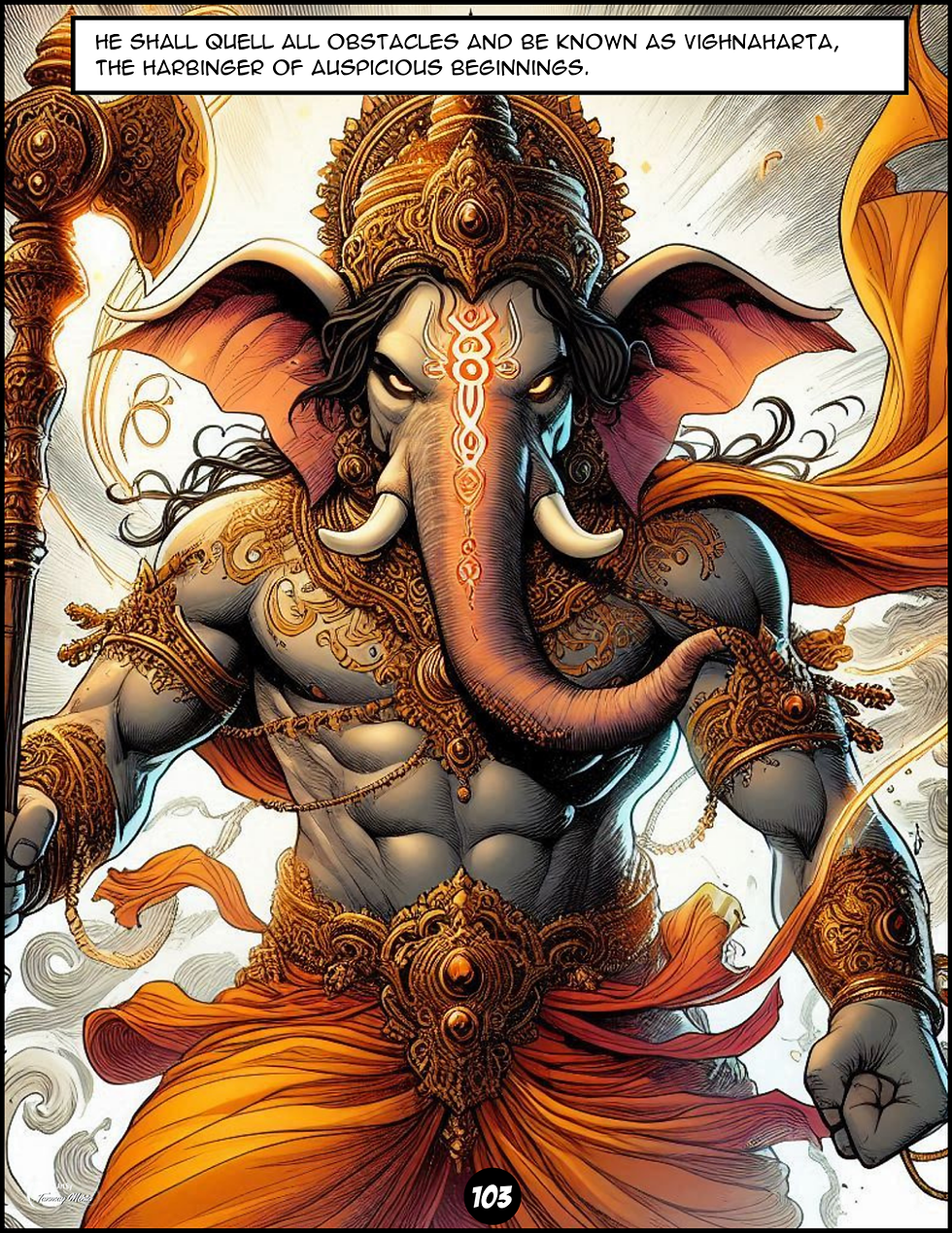Unveiling the Story Behind Ganesha's Creation
- Q world Medical Comics
- Jul 12
- 4 min read
The story of Ganesha's creation is deeply woven into the cultural fabric of India. This beloved deity, known as the remover of obstacles and the giver of wisdom, has a backstory that is both fascinating and symbolic. With roots in ancient texts and folklore, the creation of Ganesha offers insights into the values and beliefs of Hinduism.
Ganesha Creation Myth
The tale of Ganesha begins with Parvati, the wife of Lord Shiva. While Shiva was away meditating, Parvati created Ganesha from the dirt and grime of her body during a bath. She wanted a son who could guard her privacy. This act symbolized the importance of motherhood and creation. Once Ganesha was formed, Parvati breathed life into him, making him a living being.

As Ganesha stood at the door, he was completely unaware of his father, Lord Shiva, and his divine power. When Shiva returned home and was confronted by Ganesha, he saw only a child and did not recognize him as his son. In a fit of anger, he decapitated Ganesha, unable to be swayed by Parvati's explanations of who Ganesha truly was. This single act led to one of the most defining moments in Ganesha's story.
The Search for a Replacement Head
Following the shocking incident, Parvati was heartbroken. To pacify her and to amend his mistake, Shiva ordered his followers to bring back the head of the first creature they encountered. The followers set out and soon returned with the head of an elephant. Shiva, seeing the opportunity to rectify his mistake, affixed the elephant's head onto Ganesha's body.

This new head not only revitalized Ganesha but also endowed him with incredible wisdom. The elephant represents qualities such as intelligence, strength, and the ability to overcome obstacles. In this way, Ganesha transformed from a misunderstanding into a symbol of prosperity and success.
The Symbolism of Ganesha
The creation of Ganesha encapsulates numerous symbols and lessons. His elephant head is a powerful emblem, representing intellect, the ability to take on challenges, and the importance of humility. Ganesha's large ears signify the importance of listening, while his small eyes convey focus and concentration.
The stories about Ganesha often teach that wisdom comes from both intellect and experience, encouraging followers to embrace life’s lessons. In modern interpretations, Ganesha serves as a reminder of the importance of balance in life - the connection between knowledge and spirituality.

Rituals and Celebrations
The celebration of Ganesha's birthday, known as Ganesh Chaturthi, is a grand event in India. Families build ornate altars and decorate them with flowers, lights, and sweets. Offerings include ladoos, which are a favorite of Ganesha, symbolizing the sweetness of life.
During this festival, communities come together to celebrate with prayers, songs, and dances. The immersion of Ganesha idols in water at the festival's conclusion serves as a poignant reminder of the impermanence of life, emphasizing that all things must return to nature.
It's a time of renewal, as families clean their homes and prepare for the blessings of the new year ahead. This vibrant festival showcases the blend of spirituality and joy, embodying the values Ganesha represents.
Ganesha in Modern Culture
In contemporary life, Ganesha has not only remained a religious icon but also an emblem of good fortune in various walks of life. You can find his images in artwork, on stationery, and even in corporate offices as a sign of auspicious beginnings. Many businesses and students invoke Ganesha's blessings for success, showcasing the continued relevance of the ganesha origin story through time.
Moreover, the portrayal of Ganesha in art and literature continues to evolve. Artists explore his image through various mediums, from traditional paintings to modern digital art, each interpretation reflecting the values of the time and culture.
Embracing the Spirit of Ganesha
In a fast-paced world, the teachings of Ganesha encourage personal reflection and growth. His creation myth reminds us that transformation can emerge from confusion and loss. By keeping the spirit of Ganesha alive, people are inspired to confront their own obstacles with optimism and resilience.
Engaging with this rich narrative, many find actionable recommendations in their daily lives. Practicing gratitude and mindfulness, along with setting clear intentions, are just a few ways to channel Ganesha's wisdom. Creating a small personal altar with images of Ganesha or lighting a candle while meditating can also serve as reminders of focusing on goals and overcoming challenges.
In maintaining the tradition and fostering spiritual resilience, the story of Ganesha's creation continues to resonate, making it an integral part of life for many.
Finding Meaning in the Myth
Ganesha's creation myth serves not only as a religious story but also as a powerful metaphor for all of us. Life is often filled with unexpected turns - moments of joy laced with sorrow. Ganesha teaches that it's possible to grow from these experiences, emerging with newfound wisdom.
The ability to adapt, learn, and start anew is central to the human experience. As we unveil the layers of Ganesha's story, we discover timeless lessons about compassion, wisdom, and transformation.
Whether you are familiar with the ganesha origin story or just discovering it, the journey into Ganesha's creation opens the door to deeper reflection and understanding, enriching our lives in meaningful ways.
Embark on this spiritual journey, embracing the elements of creation, loss, and rebirth that Ganesha embodies, and let his wisdom guide you in your life endeavors.




Comments